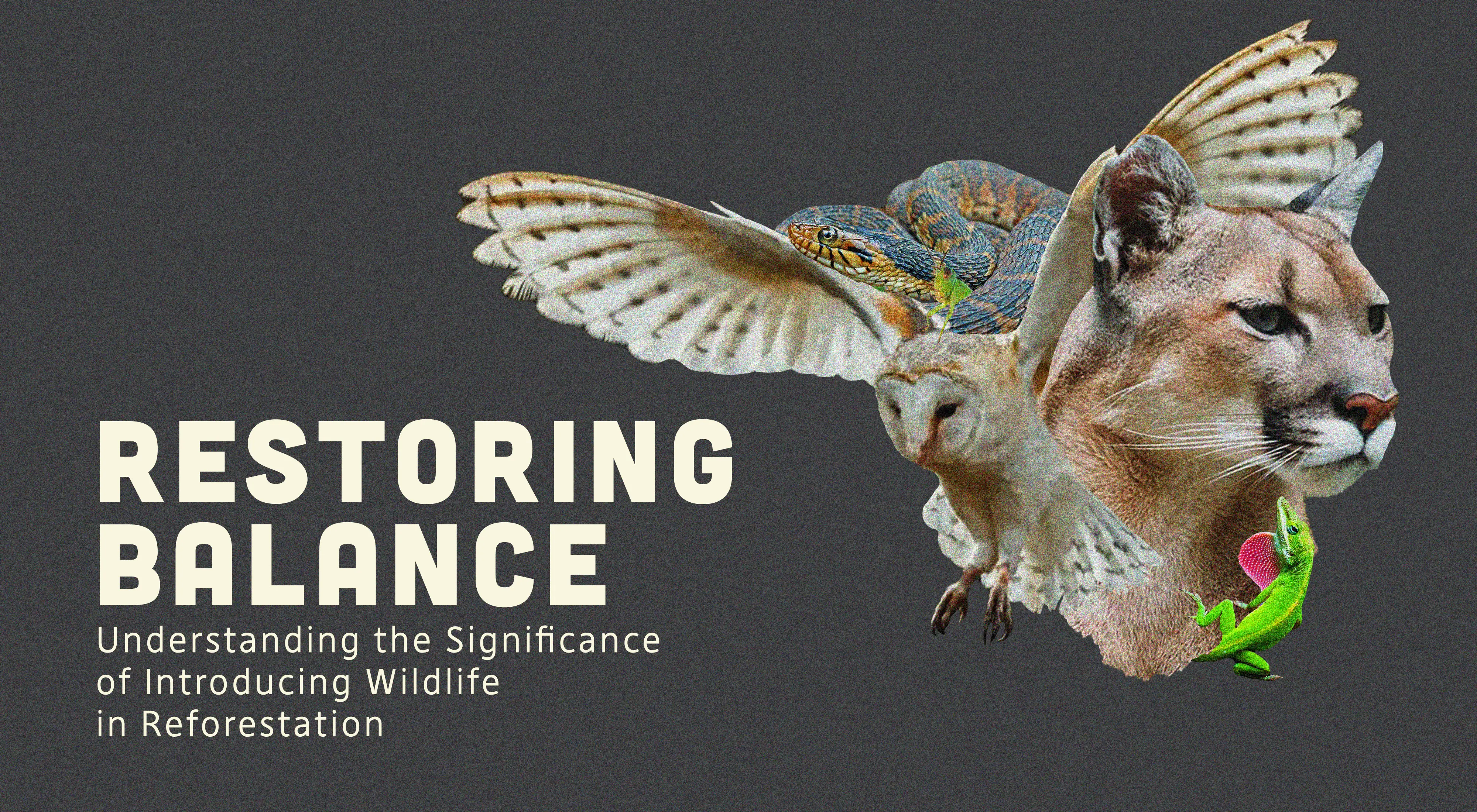In the intricate art of environmental restoration, there exists a crucial element many miss. It is the recognition that nature's harmony extends far beyond the foliage that adorns our landscapes. Introducing fauna into an environment is just as vital, an essential piece of the puzzle that contributes to the restoration of ecological balance.
When we work to rewild, we must reconstruct the interplay between creatures—the delicate choreography that defines the natural world. By introducing fauna, we inject back the systems flora depend on back into the landscape, renewing the delicate relationships that have evolved over millennia.
Fauna, as agents of change, hold the key to ecological rejuvenation. Consider the role of herbivores, those gentle grazers that shape the composition and structure of vegetation. Their presence stimulates the growth of diverse plant species, enhancing biodiversity and fostering a healthier ecosystem. Through their feeding habits, they sculpt the landscape, creating niches for other creatures to thrive.
Predators, the guardians of the wild, are integral to maintaining the delicate balance of nature. Their return triggers a cascading effect, regulating populations and ensuring the vitality of entire ecosystems. By controlling herbivore numbers, predators prevent overgrazing, allowing vegetation to flourish and creating a harmonious cycle of life.
But it is not only the large and charismatic creatures that play a role in rewilding. It is the small and often overlooked beings—the pollinators, the seed dispersers, the soil engineers—that weave the fabric of biodiversity. From bees and butterflies to birds and bats, these unsung heroes are vital in the reproduction and dispersal of plant species, perpetuating the cycle of life.
Introducing fauna into an environment however is not a whimsical act; it is a careful and informed decision guided by the expertise of conservationists and ecologists. It requires an understanding of the intricate relationships between creatures and the potential impacts on the ecosystem. Such efforts are often carried out in carefully selected locations, where the reintroduction of fauna can have the greatest positive impact on restoring balance.
The sustainable restoration of nature's harmony demands our unwavering commitment to rewilding — an approach that encompasses the planting of trees and the reintroduction of fauna. It is a collective effort, a symphony of actions orchestrated to heal our wounded planet. By welcoming back the creatures that once graced these lands, we make remediation sustainable, enriching our lives and securing the space’s well-being of generations to come.
By planting trees, we have only taken but the first step. Too often we see organizations tout, ‘a tree for this, a tree for that’. But where are the trees? Did they survive their first winter? Were they the right tree for the environment? Was a tree needed there at all, or should it have been shrub or grassland?
Life After Life is a project of caretaking: Caretaking for the deceased, caretaking for memories, caretaking for nature. When you consider giving to an environmental organization, ask if it stops at planting trees.

